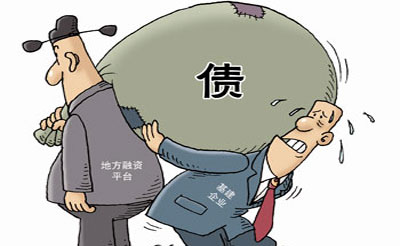


Cover
Translated By Tony Liu
Original Article: [Chinese]
China's Ministry of Finance, the National Development and Reform Commission, the People's Bank of China (PBOC) and the China Banking Regulatory Commission (CBRC) jointly issued a notice indicating that they plan to once again audit the debt owed by financing vehicles controlled by local governments.
The notice is currently being circulated throughout other central ministries.
According to the notice, local finance departments, local development and reform commissions and local branches of the PBOC and CBRC will work together in order to investigate the level of debt held by local financing vehicles.
The Ministry of Finance and the CBRC have already conducted numerous separate investigations but came to very different conclusions.
At a financial meeting on July 20th, Liu Mingkang, chairman of the CBRC, disclosed that the lending to local government financing vehicles reached 7.66 trillion Yuan at the end of June this year, whereas the finance ministry did not disclose its findings.
The EO learned that the notice includes the template of an audit form that must be filled out by local financing vehicles including such items as when the local financing platform was established, which department has authority over the platform, as well as what debts were incurred between June 2009 and June 2010.
An official from a local banking supervisory agency said, “The purpose of the new investigation is to let central ministries, bankers and local governments get together to address the risk of the bad debts.”
The Second Round of Audits
A source from the central bank also revealed to the EO that the second round of auditing financial vehicles backed by local governments has commenced.
“The work was divided up at the end of July. Local finance departments will take charge of investigating details of the debt of local financing vehicles and organizing the filing of the audit forms, while local branches of the central bank will provide assistance by offering mid-term banknotes and other information related to government debt and local banking supervisory agencies will organize a system for banks to offer information about the loans granted to these vehicles,” the above source said.
The notice also required local governments to analyze the balance and structural changes of the debts shouldered by these vehicles, along with their risks and submit a written report of their analysis to the State Council.
Local governments have already begun to take actions to audit the debts owed by local financing vehicles. On August 9th, the Shandong provincial government issued a circular requiring the local governments under its jurisdiction and provincially-owned enterprises to conduct a self-audit on the debts of their financing vehicles.
.
The Shandong audit is different from previous audits as it is jointly conducted by local finance departments, local branches of the central bank and the CBRC. The final self-audit report and statistic forms should be submitted to the provincial finance department, the Jinan branch of the PBoC and the CBRC before August 31 this year.
Actual Amount of Debt
At present, only two Chinese government agencies have released statistics on debts owed by local financing vehicles.
China’s central bank disclosed that at the end of 2009, the debts owed by financing vehicles backed by local governments reached 7.38 trillion Yuan.
According to the CBRC’s statistics, the figure reached 7.66 trillion Yuan at the end of this June.
However, some economists do not agree with the above two statistics, and think that the figure may have exceeded 10 trillion Yuan
.
The Ministry of Finance said it is difficult to investigate the real scale of debts owed by local financing vehicles.
The EO learned that in some places, local financing vehicles actually shared the same office with the local development and reform commission and local finance bureaus. In addition, the standards of statistics on government debts or non-government debts are very different among different government agencies.
Multiple Risks
“Many companies or some listed companies are owned by local governments to engage in the construction of infrastructure projects, but they can’t be categorized into local financing vehicles in accordance with the regulation,” said a source from the NDRC.
“The purpose of these companies is to issue bonds to repay the loans they owe to banks,” the above NDRC source added.
A source specialized in baking risk management said most of the debts of local financing vehicles have far exceeded their annual business revenues, which has expanded the risk of bank loans.
As real estate regulation becomes tougher, the demand for plots of land in many local areas is weakening; if this situation continues, it will pose a threat to the ability of local governments to manage their debts.
“If land prices drop markedly, we have to deal with multiple risks,” said a source from a commercial bank.
This article was edited by Rose Scobie

